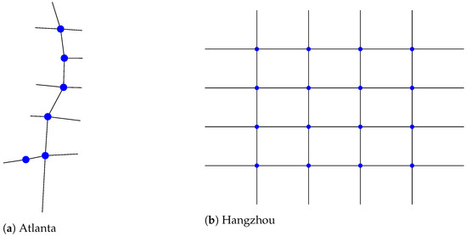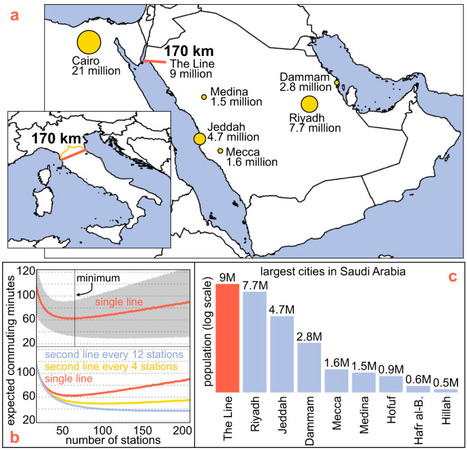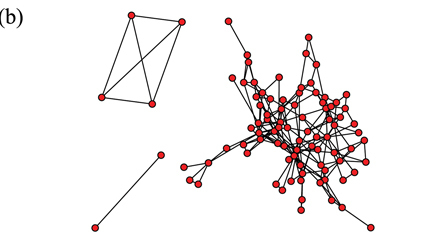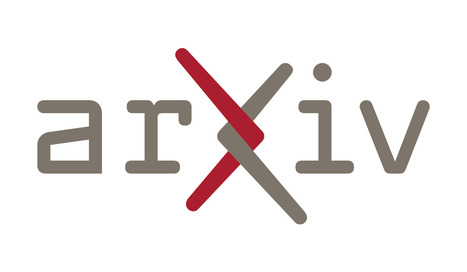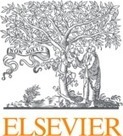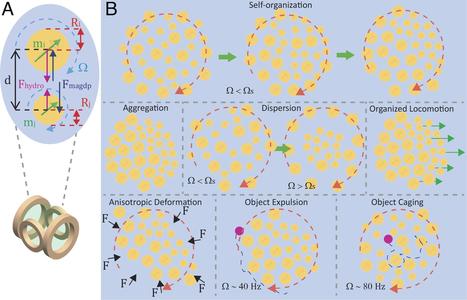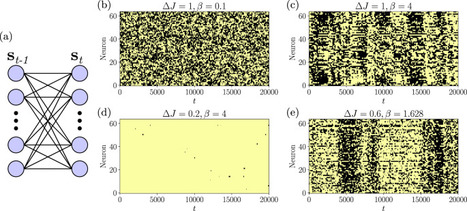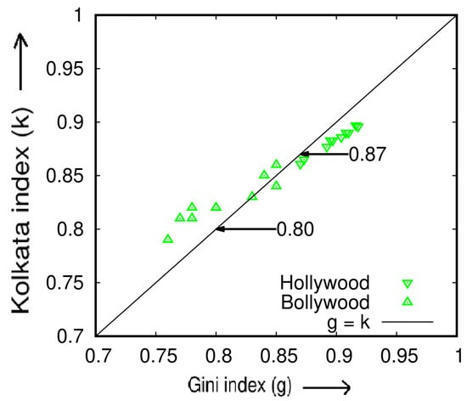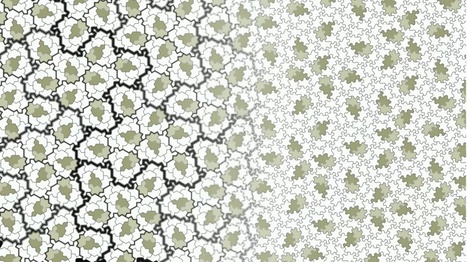 Your new post is loading...
 Your new post is loading...

|
Scooped by
Complexity Digest
June 27, 2023 4:28 PM
|
Marcin Korecki Entropy 2023, 25(7), 982 We studied the ability of deep reinforcement learning and self-organizing approaches to adapt to dynamic complex systems, using the applied example of traffic signal control in a simulated urban environment. We highlight the general limitations of deep learning for control in complex systems, even when employing state-of-the-art meta-learning methods, and contrast it with self-organization-based methods. Accordingly, we argue that complex systems are a good and challenging study environment for developing and improving meta-learning approaches. At the same time, we point to the importance of baselines to which meta-learning methods can be compared and present a self-organizing analytic traffic signal control that outperforms state-of-the-art meta-learning in some scenarios. We also show that meta-learning methods outperform classical learning methods in our simulated environment (around 1.5–2× improvement, in most scenarios). Our conclusions are that, in order to develop effective meta-learning methods that are able to adapt to a variety of conditions, it is necessary to test them in demanding, complex settings (such as, for example, urban traffic control) and compare them against established methods. Read the full article at: www.mdpi.com

|
Scooped by
Complexity Digest
June 24, 2023 3:53 PM
|
Sebastiano Bontorin & Manlio De Domenico
Communications Physics volume 6, Article number: 129 (2023) Network-based interactions allow one to model many technological and natural systems, where understanding information flow between nodes is important to predict their functioning. The complex interplay between network connectivity and dynamics can be captured by scaling laws overcoming the paradigm of information spread being solely dependent on network structure. Here, we capitalize on this paradigm to identify the relevant paths for perturbation propagation. We introduce a multi-pathways temporal distance between nodes that overcomes the limitation of focussing only on the shortest path. This metric predicts the latent geometry induced by the dynamics in which the signal propagation resembles the traveling wave solution of reaction-diffusion systems. We validate the framework on a set of synthetic dynamical models, showing that it outperforms existing approaches in predicting arrival times. On a set of empirical contact-based social systems, we show that it can be reliably used also for models of infectious diseases spread - such as the Susceptible-Infected-Susceptible - with remarkable accuracy in predicting the observed timing of infections. Our framework naturally encodes the concerted behavior of the ensemble of paths connecting two nodes in conveying perturbations, with applications ranging from regulatory dynamics within cells to epidemic spreading in social networks. Read the full article at: www.nature.com

|
Scooped by
Complexity Digest
June 24, 2023 11:24 AM
|
Rafael Prieto-Curiel & Dániel Kondor
npj Urban Sustainability volume 3, Article number: 35 (2023) Saudi Arabia plans to construct a new city, home to 9 million people. The most relevant aspect is its form, a line with a surprising length of 170 km. We analyse whether this is the best plan for a new city and some inconveniences of the prolonged urban form. Read the full article at: www.nature.com

|
Scooped by
Complexity Digest
June 23, 2023 10:13 PM
|
Alva Noë From The Entanglement, which was published last month by Princeton University Press.
When she dances, a young child already moves her body with a sensitivity to what is expected of her. Perhaps she has seen videos of Billie Eilish or Taylor Swift; she has danced with her mom; she has a bank of personalities and images that supply her with a sense of what feels right. Remarkably, what feels right has everything to do with what would look right to others—with her sensitivity, however unarticulated, to how others would respond to her. What she actualizes is nothing less than the embodiment of choreographic ideas of which she is not the author. This is a distinctively human form of intelligence at work.
The child’s dancing is the location of what I want to call an entanglement between her native impulse to move and an artistic representation of what movement is supposed to be. We come to embody choreographic ideas when we dance. We do so naturally, and we cannot avoid doing so. Read the full article at: harpers.org

|
Scooped by
Complexity Digest
June 23, 2023 5:38 PM
|
Sara Imari Walker, who developed Assembly Theory with chemist Lee Cronin, explains how the theory's definition of life might help us find it on other planets Read the full article at: www.newscientist.com

|
Scooped by
Complexity Digest
June 23, 2023 4:20 PM
|
Sebastian Stengele, David Drexel and Gemma De las Cuevas Classical spin Hamiltonians are a powerful tool to model complex systems, characterized by a local structure given by the local Hamiltonians. One of the best understood local structures is the grammar of formal languages, which are central in computer science and linguistics, and have a natural complexity measure given by the Chomsky hierarchy. If we see classical spin Hamiltonians as languages, what grammar do the local Hamiltonians correspond to? Here, we cast classical spin Hamiltonians as formal languages, and classify them in the Chomsky hierarchy. We prove that the language of (effectively) zero-dimensional spin Hamiltonians is regular, one-dimensional spin Hamiltonians is deterministic context-free, and higher-dimensional and all-to-all spin Hamiltonians is context-sensitive. This provides a new complexity measure for classical spin Hamiltonians, which captures the hardness of recognizing spin configurations and their energies. We compare it with the computational complexity of the ground state energy problem, and find a different easy-to-hard threshold for the Ising model. We also investigate the dependence on the language of the spin Hamiltonian. Finally, we define the language of the time evolution of a spin Hamiltonian and classify it in the Chomsky hierarchy. Our work suggests that universal spin models are weaker than universal Turing machines. Read the full article at: royalsocietypublishing.org

|
Scooped by
Complexity Digest
June 16, 2023 12:15 PM
|
IGOR GROSSMANN , MATTHEW FEINBERG, DAWN C. PARKER, NICHOLAS A. CHRISTAKIS, PHILIP E. TETLOCK, AND WILLIAM A. CUNNINGHAM SCIENCE 15 Jun 2023 Vol 380, Issue 6650 Advances in artificial intelligence (AI), particularly large language models (LLMs), are substantially affecting social science research. These transformer-based machine-learning models pretrained on vast amounts of text data are increasingly capable of simulating human-like responses and behaviors (1, 2), offering opportunities to test theories and hypotheses about human behavior at great scale and speed. This presents urgent challenges: How can social science research practices be adapted, even reinvented, to harness the power of foundational AI? And how can this be done while ensuring transparent and replicable research? Read the full article at: www.science.org

|
Scooped by
Complexity Digest
June 13, 2023 11:46 AM
|
Zachary G. Nicolaou, Schuyler B. Nicholson, Adilson E. Motter, Jason R. Green J. Chem. Phys. 158, 225101 (2023) External flows of energy, entropy, and matter can cause sudden transitions in the stability of biological and industrial systems, fundamentally altering their dynamical function. How might we control and design these transitions in chemical reaction networks? Here, we analyze transitions giving rise to complex behavior in random reaction networks subject to external driving forces. In the absence of driving, we characterize the uniqueness of the steady state and identify the percolation of a giant connected component in these networks as the number of reactions increases. When subject to chemical driving (influx and outflux of chemical species), the steady state can undergo bifurcations, leading to multistability or oscillatory dynamics. By quantifying the prevalence of these bifurcations, we show how chemical driving and network sparsity tend to promote the emergence of these complex dynamics and increased rates of entropy production. We show that catalysis also plays an important role in the emergence of complexity, strongly correlating with the prevalence of bifurcations. Our results suggest that coupling a minimal number of chemical signatures with external driving can lead to features present in biochemical processes and abiogenesis. Read the full article at: pubs.aip.org

|
Scooped by
Complexity Digest
June 10, 2023 12:25 PM
|
Lu Liu, Benjamin F. Jones, Brian Uzzi & Dashun Wang
Nature Human Behaviour (2023) The advent of large-scale datasets that trace the workings of science has encouraged researchers from many different disciplinary backgrounds to turn scientific methods into science itself, cultivating a rapidly expanding ‘science of science’. This Review considers this growing, multidisciplinary literature through the lens of data, measurement and empirical methods. We discuss the purposes, strengths and limitations of major empirical approaches, seeking to increase understanding of the field’s diverse methodologies and expand researchers’ toolkits. Overall, new empirical developments provide enormous capacity to test traditional beliefs and conceptual frameworks about science, discover factors associated with scientific productivity, predict scientific outcomes and design policies that facilitate scientific progress. Read the full article at: www.nature.com

|
Scooped by
Complexity Digest
June 9, 2023 8:08 PM
|
Tom Froese, Natalya Weber, Ivan Shpurov, Takashi Ikegami The theory of autopoiesis has been influential in many areas of theoretical biology, especially in the fields of artificial life and origins of life. However, it has not managed to productively connect with mainstream biology, partly for theoretical reasons, but arguably mainly because deriving specific working hypotheses has been challenging. The theory has recently undergone significant conceptual development in the enactive approach to life and mind. Hidden complexity in the original conception of autopoiesis has been explicated in the service of other operationalizable concepts related to self-individuation: precariousness, adaptivity, and agency. Here we advance these developments by highlighting the interplay of these concepts with considerations from thermodynamics: reversibility, irreversibility, and path-dependence. We interpret this interplay in terms of the self-optimization model, and present modeling results that illustrate how these minimal conditions enable a system to re-organize itself such that it tends toward coordinated constraint satisfaction at the system level. Although the model is still very abstract, these results point in a direction where the enactive approach could productively connect with cell biology. Read the full article at: www.biorxiv.org

|
Scooped by
Complexity Digest
June 9, 2023 5:20 PM
|
Caitlin Grasso, Josh Bongard Empowerment -- a domain independent, information-theoretic metric -- has previously been shown to assist in the evolutionary search for neural cellular automata (NCA) capable of homeostasis when employed as a fitness function. In our previous study, we successfully extended empowerment, defined as maximum time-lagged mutual information between agents' actions and future sensations, to a distributed sensorimotor system embodied as an NCA. However, the time-delay between actions and their corresponding sensations was arbitrarily chosen. Here, we expand upon previous work by exploring how the time scale at which empowerment operates impacts its efficacy as an auxiliary objective to accelerate the discovery of homeostatic NCAs. We show that shorter time delays result in marked improvements over empowerment with longer delays, when compared to evolutionary selection only for homeostasis. Moreover, we evaluate stability and adaptability of evolved NCAs, both hallmarks of living systems that are of interest to replicate in artificial ones. We find that short-term empowered NCA are more stable and are capable of generalizing better to unseen homeostatic challenges. Taken together, these findings motivate the use of empowerment during the evolution of other artifacts, and suggest how it should be incorporated to accelerate evolution of desired behaviors for them. Read the full article at: arxiv.org

|
Scooped by
Complexity Digest
June 8, 2023 4:51 PM
|
The puzzling behavior of black hole interiors has led researchers to propose a new physical law: the second law of quantum complexity. Read the full article at: www.quantamagazine.org

|
Scooped by
Complexity Digest
June 6, 2023 4:41 PM
|
William B. Miller, František Baluška, Arthur S. Reber Progress in Biophysics and Molecular Biology Crick's Central Dogma has been a foundational aspect of 20th century biology, describing an implicit relationship governing the flow of information in biological systems in biomolecular terms. Accumulating scientific discoveries support the need for a revised Central Dogma to buttress evolutionary biology's still-fledgling migration from a Neodarwinian canon. A reformulated Central Dogma to meet contemporary biology is proposed: all biology is cognitive information processing. Central to this contention is the recognition that life is the self-referential state, instantiated within the cellular form. Self-referential cells act to sustain themselves and to do so, cells must be in consistent harmony with their environment. That consonance is achieved by the continuous assimilation of environmental cues and stresses as information to self-referential observers. All received cellular information must be analyzed to be deployed as cellular problem-solving to maintain homeorhetic equipoise. However, the effective implementation of information is definitively a function of orderly information management. Consequently, effective cellular problem-solving is information processing and management. The epicenter of that cellular information processing is its self-referential internal measurement. All further biological self-organization initiates from this obligate activity. As the internal measurement by cells of information is self-referential by definition, self-reference is biological self-organization, underpinning 21st century Cognition-Based Biology. Read the full article at: www.sciencedirect.com
|

|
Scooped by
Complexity Digest
June 25, 2023 5:56 PM
|
Steven Ceron, Gaurav Gardi, Kirstin Petersen, and Metin Sitti PNAS 120 (24) e2221913120 Microscale collectives composed of simple, locally reactive constituents can harness the effects of self-organization to enable diverse global behaviors. While phase separation of homogeneous collectives is well studied, heterogeneous collectives are relatively unexplored. This study focuses on a collective of magnetic microdisks of different sizes and examines how the group can self-organize into homogeneous subgroups using an external magnetic field. We find that heterogeneity enables collective behaviors including morphology reconfiguration, organized aggregation, dispersion, and locomotion, and caging and expulsion of external objects. Our work furthers insights into self-organization of heterogeneous microrobot collectives and may provide useful insights into the future of active matter. Read the full article at: www.pnas.org

|
Scooped by
Complexity Digest
June 24, 2023 1:18 PM
|
By treating molecules as geometric tessellations, scientists devised a new way to forecast how 2D materials might self-assemble. Read the full article at: www.quantamagazine.org

|
Scooped by
Complexity Digest
June 23, 2023 11:04 PM
|
Keith Farnsworth This is an un-reviewed, unpublished pre-print of a paper written for a special issue of BioSystems on Code Biology. It explains why biological codes are essential for life to be autonomous. The first reason is that autonomy requires freedom from exogenous control (cause-effect) and this is achieved by stripping the force from efficient causes using transducers at the organism boundary (e.g. cell receptors) so they become signal-response: contingent influences, rather than controls. All transducers embody a cypher or a code. The second is that evolvable reproduction requires the maintenance of a separate formal information store (from Von Neumann's replicator theory), which must be causally isolated from the rest of the replicating system. This is achieved by storing the information in a form that does not correlate with the rest of the system, hence it requires code-translation to become causal. These explanations rest on the idea of efficient cause being the result of empowering formal cause with a physical force-field (Farnsworth 2022 - BioSystems). They also provide a new and powerful way of understanding semiotic communications in general. Read the full article at: www.researchgate.net

|
Scooped by
Complexity Digest
June 23, 2023 8:54 PM
|
Yan Leng , Xiaowen Dong, Esteban Moro, Alex Pentland Information Systems Research We use high-resolution mobile phone data with geolocation information and propose a novel technical framework to study how social influence propagates within a phone communication network and affects the offline decision to attend a performance event. Our fine-grained data are based on the universe of phone calls made in a European country between January and July 2016. We isolate social influence from observed and latent homophily by taking advantage of the rich spatial-temporal information and the social interactions available from the longitudinal behavioral data. We find that influence stemming from phone communication is significant and persists up to four degrees of separation in the communication network. Building on this finding, we introduce a new “influence” centrality measure that captures the empirical pattern of influence decay over successive connections. A validation test shows that the average influence centrality of the adopters at the beginning of each observational period can strongly predict the number of eventual adopters and has a stronger predictive power than other prevailing centrality measures such as the eigenvector centrality and state-of-the-art measures such as diffusion centrality. Our centrality measure can be used to improve optimal seeding strategies in contexts with influence over phone calls, such as targeted or viral marketing campaigns. Finally, we quantitatively demonstrate how raising the communication probability over each connection, as well as the number of initial seeds, can significantly amplify the expected adoption in the network and raise net revenue after taking into account the cost of these interventions. Read the full article at: pubsonline.informs.org

|
Scooped by
Complexity Digest
June 23, 2023 5:23 PM
|
Miguel Aguilera, Masanao Igarashi & Hideaki Shimazaki
Nature Communications volume 14, Article number: 3685 (2023) Most natural systems operate far from equilibrium, displaying time-asymmetric, irreversible dynamics characterized by a positive entropy production while exchanging energy and matter with the environment. Although stochastic thermodynamics underpins the irreversible dynamics of small systems, the nonequilibrium thermodynamics of larger, more complex systems remains unexplored. Here, we investigate the asymmetric Sherrington-Kirkpatrick model with synchronous and asynchronous updates as a prototypical example of large-scale nonequilibrium processes. Using a path integral method, we calculate a generating functional over trajectories, obtaining exact solutions of the order parameters, path entropy, and steady-state entropy production of infinitely large networks. Entropy production peaks at critical order-disorder phase transitions, but is significantly larger for quasi-deterministic disordered dynamics. Consequently, entropy production can increase under distinct scenarios, requiring multiple thermodynamic quantities to describe the system accurately. These results contribute to developing an exact analytical theory of the nonequilibrium thermodynamics of large-scale physical and biological systems and their phase transitions. The Sherrington-Kirkpatrick model is a paradigmatic model in the field of complex disordered systems such as spin glasses and neural networks. Here the authors study the stochastic thermodynamics of an asymmetric version of the model by using a path integral method and provide exact solutions for the entropy production. Read the full article at: www.nature.com

|
Scooped by
Complexity Digest
June 17, 2023 12:35 PM
|
David Matthews, Andrew Spielberg, Daniela Rus, Sam Kriegman, Josh Bongard Robots are notoriously difficult to design because of complex interdependencies between their physical structure, sensory and motor layouts, and behavior. Despite this, almost every detail of every robot built to date has been manually determined by a human designer after several months or years of iterative ideation, prototyping, and testing. Inspired by evolutionary design in nature, the automated design of robots using evolutionary algorithms has been attempted for two decades, but it too remains inefficient: days of supercomputing are required to design robots in simulation that, when manufactured, exhibit desired behavior. Here we show for the first time de-novo optimization of a robot's structure to exhibit a desired behavior, within seconds on a single consumer-grade computer, and the manufactured robot's retention of that behavior. Unlike other gradient-based robot design methods, this algorithm does not presuppose any particular anatomical form; starting instead from a randomly-generated apodous body plan, it consistently discovers legged locomotion, the most efficient known form of terrestrial movement. If combined with automated fabrication and scaled up to more challenging tasks, this advance promises near instantaneous design, manufacture, and deployment of unique and useful machines for medical, environmental, vehicular, and space-based tasks. Read the full article at: arxiv.org

|
Scooped by
Complexity Digest
June 15, 2023 1:27 PM
|
Luca Gallo, Lucas Lacasa, Vito Latora, Federico Battiston Many real-world complex systems are characterized by interactions in groups that change in time. Current temporal network approaches, however, are unable to describe group dynamics, as they are based on pairwise interactions only. Here, we use time-varying hypergraphs to describe such systems, and we introduce a framework based on higher-order correlations to characterize their temporal organization. We analyze various social systems, finding that groups of different sizes have typical patterns of long-range temporal correlations. Moreover, our method reveals the presence of non-trivial temporal interdependencies between different group sizes. We introduce a model of temporal hypergraphs with non-Markovian group interactions, which reveals complex memory as a fundamental mechanism underlying the pattern in the data. Read the full article at: arxiv.org

|
Scooped by
Complexity Digest
June 11, 2023 4:18 PM
|
I. Samoylenko, D. Aleja, E. Primo, K. Alfaro-Bittner, E. Vasilyeva, K. Kovalenko, D. Musatov, A. M. Raigorodskii, R. Criado, M. Romance, D. Papo, M. Perc, B. Barzel, and S. Boccaletti
Phys. Rev. X 13, 021032 A wealth of evidence shows that real-world networks are endowed with the small-world property, i.e., that the maximal distance between any two of their nodes scales logarithmically rather than linearly with their size. In addition, most social networks are organized so that no individual is more than six connections apart from any other, an empirical regularity known as the six degrees of separation. Why social networks have this ultrasmall-world organization, whereby the graph’s diameter is independent of the network size over several orders of magnitude, is still unknown. We show that the “six degrees of separation” is the property featured by the equilibrium state of any network where individuals weigh between their aspiration to improve their centrality and the costs incurred in forming and maintaining connections. We show, moreover, that the emergence of such a regularity is compatible with all other features, such as clustering and scale-freeness, that normally characterize the structure of social networks. Thus, our results show how simple evolutionary rules of the kind traditionally associated with human cooperation and altruism can also account for the emergence of one of the most intriguing attributes of social networks. Read the full article at: link.aps.org

|
Scooped by
Complexity Digest
June 10, 2023 12:24 PM
|
Nils Köbis, Philipp Lorenz-Spreen, Tamer Ajaj, Jean-Francois Bonnefon, Ralph Hertwig, Iyad Rahwan The increasing prevalence of image-altering filters on social media and video conferencing technologies has raised concerns about the ethical and psychological implications of using Artificial Intelligence (AI) to manipulate our perception of others. In this study, we specifically investigate the potential impact of blur filters, a type of appearance-altering technology, on individuals' behavior towards others. Our findings consistently demonstrate a significant increase in selfish behavior directed towards individuals whose appearance is blurred, suggesting that blur filters can facilitate moral disengagement through depersonalization. These results emphasize the need for broader ethical discussions surrounding AI technologies that modify our perception of others, including issues of transparency, consent, and the awareness of being subject to appearance manipulation by others. We also emphasize the importance of anticipatory experiments in informing the development of responsible guidelines and policies prior to the widespread adoption of such technologies. Read the full article at: arxiv.org

|
Scooped by
Complexity Digest
June 9, 2023 6:20 PM
|
Suchismita Banerjee, Soumyajyoti Biswas, Bikas K. Chakrabarti, Asim Ghosh, and Manipushpak Mitra Entropy 2023, 25(5), 735 Social inequalities are ubiquitous and evolve towards a universal limit. Herein, we extensively review the values of inequality measures, namely the Gini (g) index and the Kolkata (k) index, two standard measures of inequality used in the analysis of various social sectors through data analysis. The Kolkata index, denoted as k, indicates the proportion of the ‘wealth’ owned by (1−𝑘) fraction of the ‘people’. Our findings suggest that both the Gini index and the Kolkata index tend to converge to similar values (around 𝑔=𝑘≈0.87, starting from the point of perfect equality, where 𝑔=0 and 𝑘=0.5) as competition increases in different social institutions, such as markets, movies, elections, universities, prize winning, battle fields, sports (Olympics), etc., under conditions of unrestricted competition (no social welfare or support mechanism). In this review, we present the concept of a generalized form of Pareto’s 80/20 law (𝑘=0.80), where the coincidence of inequality indices is observed. The observation of this coincidence is consistent with the precursor values of the g and k indices for the self-organized critical (SOC) state in self-tuned physical systems such as sand piles. These results provide quantitative support for the view that interacting socioeconomic systems can be understood within the framework of SOC, which has been hypothesized for many years. These findings suggest that the SOC model can be extended to capture the dynamics of complex socioeconomic systems and help us better understand their behavior. Read the full article at: www.mdpi.com

|
Scooped by
Complexity Digest
June 9, 2023 4:10 PM
|
Bo Yang We have discovered a novel transition rule for binary cellular automata (CA) that yields self-replicating structures across two spatial and temporal scales from sparsely populated random initial conditions. Lower-level, shapeshifting clusters frequently follow a transient attractor trajectory, generating new clusters, some of which periodically self-duplicate. When the initial distribution of live cells is sufficiently sparse, these clusters coalesce into larger formations that also self-replicate. These formations may further form the boundaries of an expanding complex on an even larger scale. This rule, dubbed ``Outlier,'' is rotationally symmetric and applies to 2D Moore neighborhoods. It was evolved through Genetic Programming during an extensive automated search for rules that foster open-ended evolution in CA. While self-replicating structures, both crafted and emergent, hav Read the full article at: arxiv.org

|
Scooped by
Complexity Digest
June 7, 2023 11:53 AM
|
David Smith, Joseph Samuel Myers, Craig S. Kaplan, Chaim Goodman-Strauss The recently discovered "hat" aperiodic monotile mixes unreflected and reflected tiles in every tiling it admits, leaving open the question of whether a single shape can tile aperiodically using translations and rotations alone. We show that a close relative of the hat -- the equilateral member of the continuum to which it belongs -- is a weakly chiral aperiodic monotile: it admits only non-periodic tilings if we forbid reflections by fiat. Furthermore, by modifying this polygon's edges we obtain a family of shapes called Spectres that are strictly chiral aperiodic monotiles: they admit only chiral non-periodic tilings based on a hierarchical substitution system. Read the full article at: arxiv.org
|



 Your new post is loading...
Your new post is loading...

